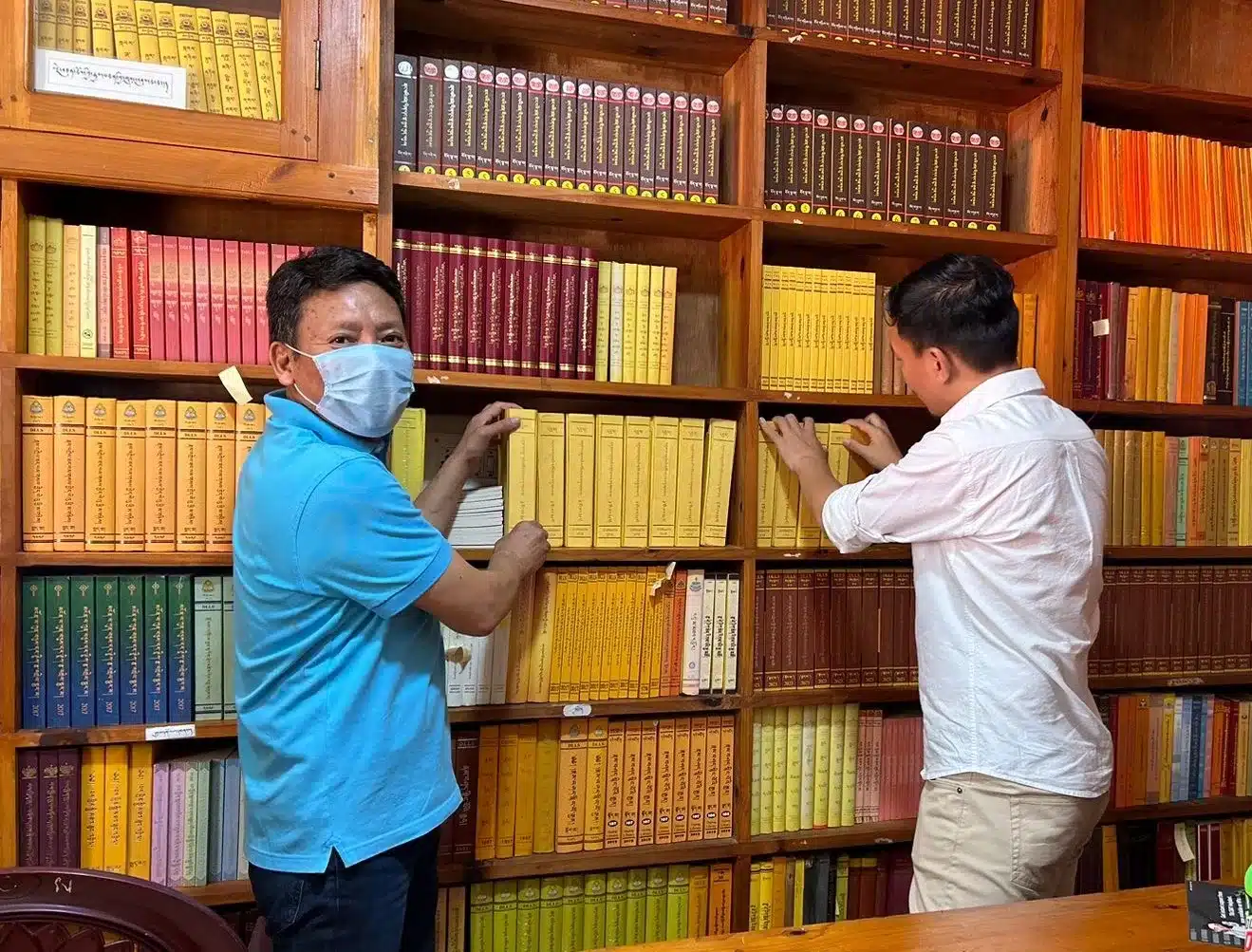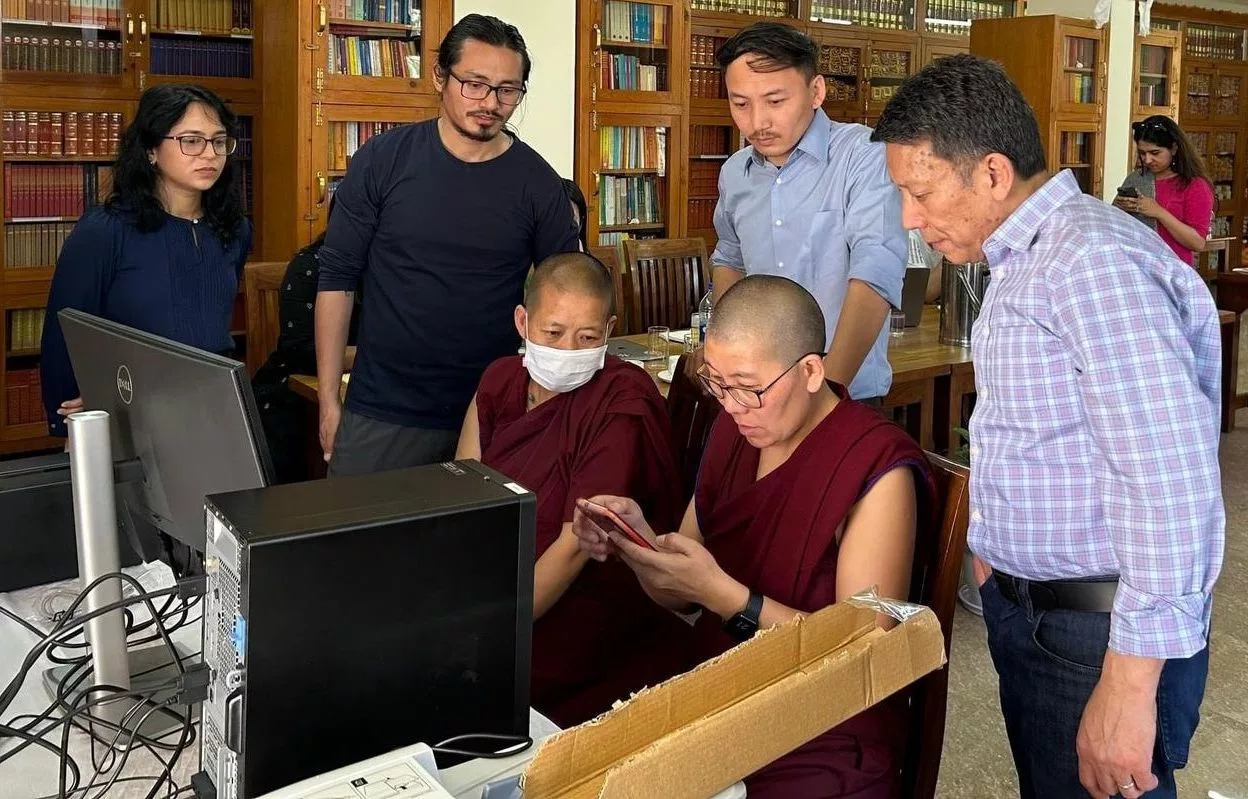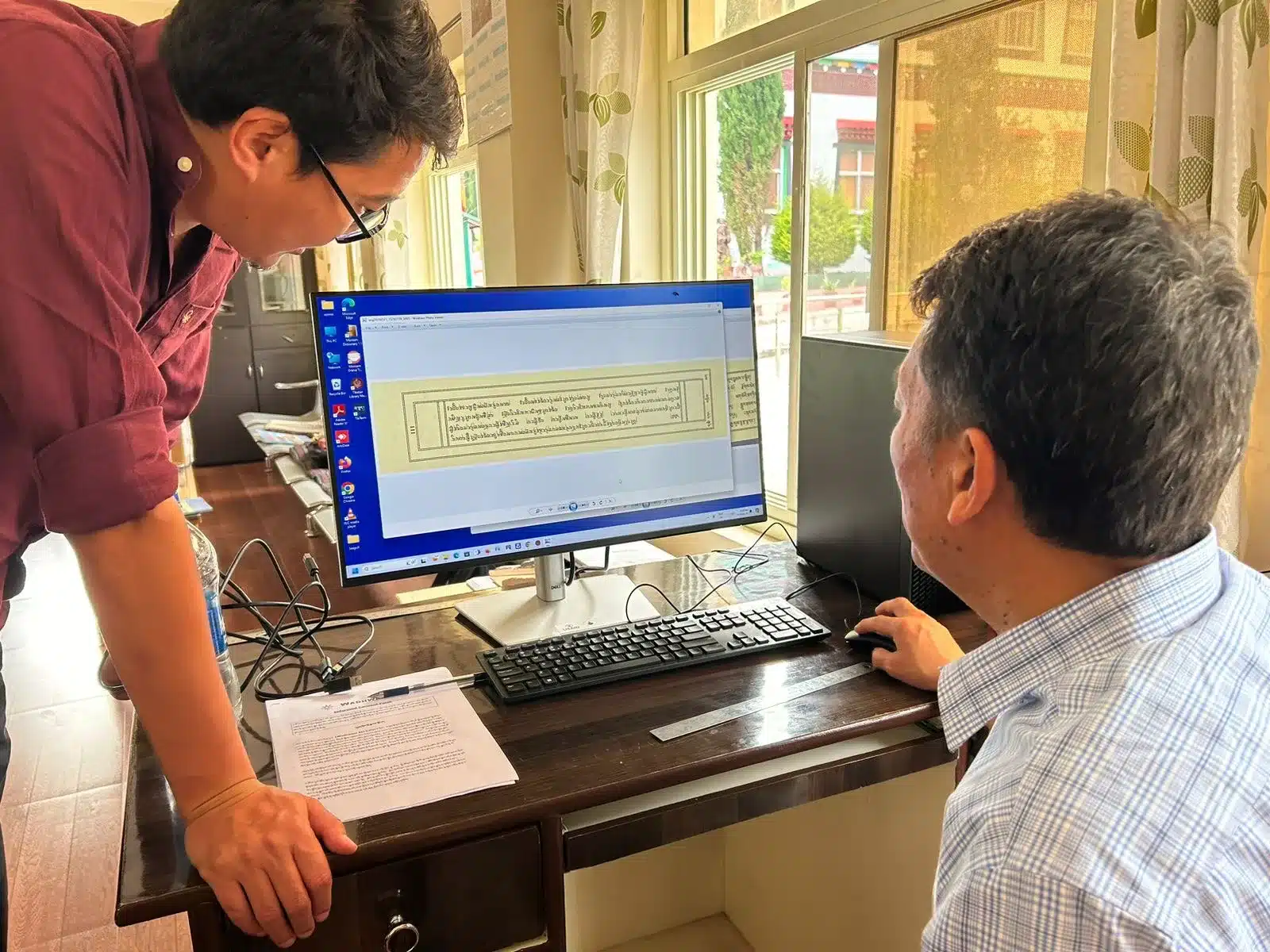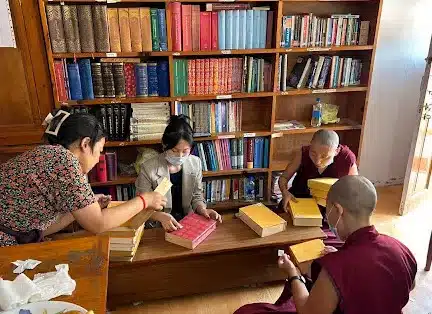
BDRC Head Librarian Karma Gongde helps organize library books at Geden Choeling Nunnery
BDRC is well known for digitization work with libraries and local partners, but did you know that our method of digital preservation involves much more than scanning? We also work alongside librarians to make improvements to library management and lending systems. This collaborative work is an essential component of preservation, and integral to our vision of increased access to Buddhist literature for the global community. Read on for a glimpse into how we work with local partners, illustrating for our supporters how your donations translate in practical ways into text conservation and cultural preservation.
We are currently involved in developing a Tibetan Library Management System (TLMS) app that will allow libraries to organize their collections and manage their lending systems in a convenient digital format. BDRC's Head Librarian, Karma Gongde, is training Tibetan monastics and scholars to use the TLMS app and field testing extensively at libraries in Himachal Pradesh. The field testing will also help the developers, Wadhwani Institute for Artificial Intelligence, to improve the app before it is widely used.
This type of training gives librarians a deep understanding of the complex and multifaceted tasks involved in library management and digitization, leading to improved preservation of Tibetan manuscripts and cultural resources, as well as increased accessibility to them. Furthermore, one of the longer term goals of the work is to create a union catalog of all the major Tibetan collections held at different locations and libraries in India, with important implications for cultural and linguistic continuity.
In May this year, Karma held an initial training session at Ngagyur Shugseb Nunnery in Dharamasala for librarians from a number of institutions, including one of BDRC's long-term partners, the Library of Tibetan Works and Archives (LTWA). The librarians learned essential skills of library management and digitization, with a focus on the cataloging workflow. One element of this is the use of specialized software to create unique QR codes for each item by entering specific metadata, such as title, author, publication date, and a unique identifier, into the system. Another is to assign sequential accession numbers to each item and maintain a systematic record of accession numbers for inventory and retrieval purposes. The librarians also learned how to meticulously organize and store digital files.
After more detailed work with the librarians and nuns at Ngagyur Shugseb Gompa, the BDRC team moved on to the monastery of Nyagyur Zabsang Choekhor Ling in Chauntra, where Karma provided training on using scanners to digitize manuscripts and conducted a thorough assessment of the library's texts. The monastery's key staff learned about using the TLMS app for cataloging, so that they can manage their collection effectively once it has been fully digitized.

Librarian Training at Ngagyur Shugseb Nunnery

Training in digitization of Buddhist texts

Rinchen Kyi working with the nuns at Geden Choeling Nunnery
On May 24th the team moved on to Geden Choeling Nunnery in Dharamsala, where Karma collaborated closely with the head and assistant librarians to assess their collection of Buddhist scriptures in preparation for digitization. In the meantime, Project Coordinator Rinchen Kyi worked alongside the nuns to help them organize their library books, affix accession codes, and implement the TLMS app.
The BDRC team prepared training videos and checklists for the digitization workflow to assist the librarians at the various locations with implementation. In turn, the feedback from librarians after field testing the TMLS proved invaluable in identifying glitches and challenges, which will assist Wadhwani AI in fine-tuning the app for wider use. All of these skills and tools will facilitate the management and preservation of Tibetan library collections, ensuring that invaluable Buddhist texts and resources are available and accessible for future generations.





Sorry, the comment form is closed at this time.